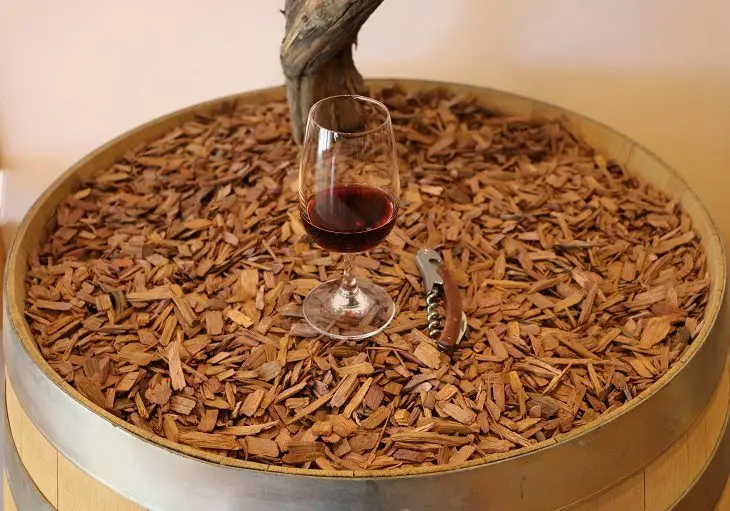Tannins from oak wood complement the taste of wine (the drink seems “dry”), contribute to its clarification and long-term storage. In classical technology, the wine is aged in American or European oak barrels. However, in addition to the high cost, the barrel requires certain storage conditions (temperature, humidity, light), which are difficult to organize in an apartment. An alternative to a barrel is aging wine on oak chips, which is practiced not only in home winemaking, but also in the industrial production of cheap wines.
Oak chips are specially prepared and dried wood, from which excess tannins have been removed. Supplied in the form of free-form pieces, as well as chips, cubes and spirals. Wood chips are added to wine, beer and strong distillates to simulate aging, and can be purchased at wine shops or prepared on your own.
Oak chips are divided into types according to the degree of roasting, it is this parameter that affects the taste of the drink:
- without roasting – has a high content of tannins, gives light fruity, almond and woody shades;
- light roast – vanilla, fruity and floral tones;
- medium roast – rich vanilla, almond, coconut, caramel and spice notes;
- strong roasting – chocolate and smoky tones.
Which wines insist on wood chips
With a rich taste and persistent aroma, which are usually aged in a barrel according to the classical technology, for example, grape, apple, cherry, chokeberry.
Wines with a weak or very delicate smell after chips can become too “oaky” – aging tones drown out the taste and aroma of the raw material. Definitely not worth the practice of insisting on wood chips for flower, strawberry, currant and peach wines.
Aging in a barrel and on wood chips is not even suitable for all grape wines (especially white varieties), therefore, in order not to spoil the entire batch of the drink, it is more correct to first make a test on a small amount, for example, 1 liter, if you like the result, add wood chips from the same batches and withstand exactly the same number of days.
When to add wood chips to wine
Theoretically, at any stage of preparation: starting from fermentation (after removing the pulp) and ending with the final exposure.
In practice, it is best to add roasted wood chips after several months of aging, when the wine has cleared, its organoleptics are more or less formed, and the winemaker understands what notes are required, as well as how intense they should be.
During fermentation, it is difficult to accurately calculate the time of infusion on wood chips, since the taste of the wine itself will still change. In this case, unroasted wood chips are added if you definitely want to saturate the drink with tannins.
Proportions and exposure time
Due to the different properties of wood, preparation and roasting methods, each chip is individual, so there cannot be exact proportions and exposure times for any case.

The standard amount for wine is 1-3 g / l. During fermentation, it is better to add no more than 1-2 g / l. Due to the larger area of contact between wood and wine, wood chips release tannins faster than a classic barrel, so the wine aging time on wood chips is from 5 to 30 days. In this case, after 3-4 days, you should control the taste of the drink every 1-2 days, so as not to overdo it.
Before use, it is advisable to leave oak chips in boiling water for 5-10 minutes, then hold for 1-2 days in a strong distillate or alcohol. This not only disinfects the wood, but also removes excess tannins if for some reason they were not removed earlier.
P.S. Oversaturated wine can be diluted with ordinary wine without aging, add sugar or fix with vodka (alcohol, distillate). You can not use water and unfermented juice, otherwise the drink will turn sour.









